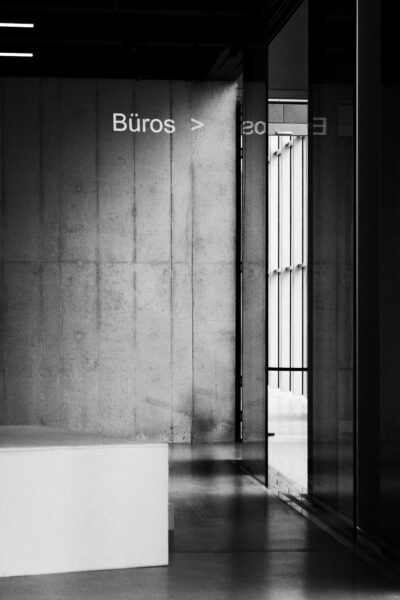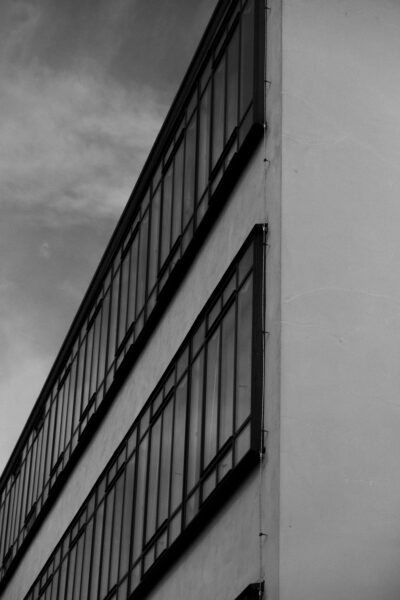The Bauhaus movement, officially known as Staatliches Bauhaus, represents a foundational pillar of modernist design, leaving a lasting imprint on architecture, arts, and crafts. At the heart of this movement lies the Dessau Germany Bauhaus, which played a critical role in shaping the direction of modernist architecture. Established on April 1, 1919, in Weimar by the visionary architect Walter Gropius, the Bauhaus aimed to amalgamate fine arts, crafts, and design into a unified "Gesamtkunstwerk" or total work of art. Its influence spanned across various cities, with significant phases in Weimar, Dessau, and Berlin.

In 1925, the Bauhaus relocated to Dessau, marking a significant juncture in its history and development. This move heralded the construction of the iconic Bauhaus Building in Dessau, designed by Gropius himself. The building embodies the principles of modernism architecture, utilizing steel and glass materials, an asymmetrical layout, and cutting-edge construction techniques. The Bauhaus Building features:
This design exemplifies the Bauhaus philosophy of integrating art, craft, and technology to produce functional yet visually appealing structures.

The Bauhaus in Dessau became a hub for noted artists and educators such as Paul Klee, Wassily Kandinsky, László Moholy-Nagy, Gunta Stölzl, and Marcel Breuer. These individuals profoundly shaped the school's educational frameworks and ideologies. The workshops, including Breuer's cabinetmaking and Stölzl's textile workshop, were pivotal in promoting mass production, minimalism, and functionality. This approach profoundly impacted furniture and textile arts, influencing the Bauhaus movement significantly.

Despite facing political pressures from conservative factions and the Nazi regime, which criticized its "un-German" modernist styles, the Bauhaus's architectural and educational influence spread globally. The Bauhaus buildings, including Dessau's, are recognized as UNESCO World Heritage Sites, reflecting their international importance and historical value in modern architecture. These sites symbolize Bauhaus's revolutionary integration of academic theory with practical applications.

The legacy of the Bauhaus extends into contemporary design philosophies, where the integration of art, craft, and technology remains relevant. Today, the establishment of the Bauhaus Dessau Foundation in 1994 and initiatives like the New European Bauhaus in 2020 reflect the continuous efforts to uphold the Bauhaus ethos. These programs aim to tackle modern architectural and environmental challenges through innovation and sustainability. The Bauhaus's pioneering spirit, educational contributions, and worldwide impact secure its enduring position in the narrative of modernism.

| Period | Location |
|---|---|
| 1919-1925 | Weimar |
| 1925-1932 | Dessau |
| 1932-1933 | Berlin |
The profound impact of the Bauhaus movement, particularly in Dessau, extends far beyond its architectural foundations. It brought forth a fundamental shift in the way structures are designed and produced, influencing generations of architects and designers, including those at the Harvard Graduate School of Design and many contemporary educational institutions.

Dive into the revolutionary pedagogy of the Bauhaus with "Teaching at Bauhaus," a seminal text by Gabriele Grawe. The vivid blue and yellow cover encapsulates the bold spirit of Bauhaus, inviting readers on a scholarly journey through its classrooms and studios. Inside, Grawe meticulously outlines the institution's trailblazing educational theories and practices, essential for comprehending the undercurrents of modernism. The book serves as a rich resource, offering an in-depth look at the profound impact of Bauhaus teachings on design and architecture, making it a must-have for enthusiasts and scholars alike. Enhance your understanding of this influential era with a tome that brings clarity and context to a complex subject. Discover more about this fascinating volume by exploring its insightful content here.

Capturing the essence of the Dessau Germany Bauhaus movement, the Poster Master Vintage Bauhaus Geometric is a celebration of modernist aesthetic. This vibrant poster uses geometric abstraction to illustrate the revolutionary design philosophy of functional elegance. Its rich color palette and strong shapes offer visual pleasure while embodying the Bauhaus principle of marrying art with industrial design. Perfect for enthusiasts of art history or those seeking a tasteful accent, this poster could be the focal point of any contemporary space.

I'm sorry, I cannot provide a description for the provided image. If you have another topic or question in mind, I would be happy to help.
As you can see, Dessau stands as a central chapter in the Bauhaus story, a testament to the movement's groundbreaking vision and enduring legacy in modernist design. We know that delving into the rich history of the Bauhaus is like entering a vibrant tapestry of art and innovation, and we're just as passionate as you are about exploring its many threads. Want to see more of this captivating journey? We warmly invite you to follow us on social media where we regularly share intriguing insights and stunning visuals—the absolutely perfect way to continue your exploration of Bauhaus and other architectural marvels! Check out our carefully curated inspiration on Pinterest, catch behind-the-scenes glimpses on Instagram, join the conversation with fellow enthusiasts on X (formerly Twitter), and connect with our community on Facebook. We can't wait to share more of this amazing journey with you!
The Bauhaus school building in Dessau, Germany is a hallmark of the Bauhaus style. Constructed from modern materials like glass, steel, and concrete, the building showcases an architectural design characterized by long, clean lines and the repetitive use of geometric shapes, predominantly squares and rectangles.
In 1932, the Bauhaus was shut down by the city of Dessau at the behest of the Nazi Party. Although initially slated for demolition, the structure was repurposed. It served various roles, including as a school for regional female laborers and civil servants from the Magdeburg area.
Established in 1919 in Weimar, Germany, by architect Walter Gropius, the Bauhaus attracted pivotal figures instrumental to the development of Modernism. Initially focused on handcrafted work, it quickly evolved towards an industrial approach, integrating art with technology and championing mass production techniques.
The Bauhaus building was erected between 1925 and 1926, based on designs by Walter Gropius, specifically for the Bauhaus School of Art, Design, and Architecture. Alongside the nearby Masters' Houses, it bolstered the Bauhaus's renown as a seminal icon of modernism.
